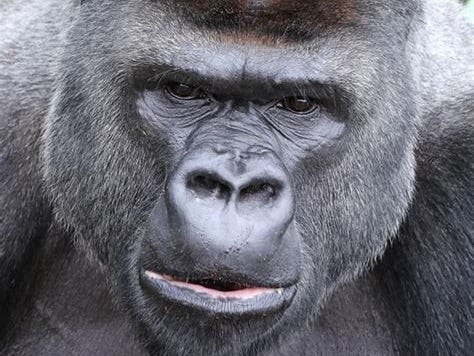SF Zoo Treats Gorillas Like Inventory, Not Individuals
Why Moving Cecil the Gorilla to SF Zoo Is a Mistake

The San Francisco Zoo is gearing up to welcome 27-year-old silverback gorilla Cecil from the Louisville Zoo, describing the move as a “new chapter” and celebrating the chance for him to “lead his own group.” But behind the feel-good PR lies a disturbing truth: this isn’t about animal welfare. It’s about control, breeding quotas, and the illusion of progress.
Cecil’s transfer is just the latest maneuver in the Species Survival Plan (SSP), a program operated by zoos under the guise of conservation. But make no mistake: the SSP does not save animals in the wild. It maintains captive populations — moving gorillas like Cecil across the country to keep his offspring on display and continue the cycle of artificial, high-stakes social manipulation.
Highly intelligent, emotionally complex animals are uprooted, reshuffled, and plugged into breeding programs like replaceable parts in a machine.
And the costs of this system are deadly.
A Baby Crushed. A Silverback Dead. Zero Transparency.
San Francisco Zoo’s track record with gorilla care is not just troubling — it’s tragic. In 2017, a baby gorilla named Kabibe was crushed to death by a hydraulic gate in what the zoo called a “freak accident.” But it wasn’t a one-off — it was a result of infrastructure and oversight failures in an aging, outdated facility built in 1980.
Recently, Oscar died after undergoing a risky procedure at the zoo. The San Francisco Zoo has refused to release Oscar’s necropsy report, blocking transparency and raising serious questions about what happened behind closed doors.
According to multiple well-placed employees, Oscar was being used in an experimental breeding attempt and was placed under anesthesia — a known risk for great apes. He never recovered. And the public still doesn’t have answers.
The SSP: Breeding Without Accountability
Gorilla SSP officials and zoo administrators claim these moves are “modeled after wild behavior.” But gorillas in the wild aren’t flown across the country and dropped into unfamiliar groups to meet institutional breeding targets.
They form strong, lasting social bonds. They mourn. They grieve. And when those bonds are severed — as they will be for Cecil — the emotional toll is real.
Now, San Francisco is positioning Cecil to step into a leadership role among the zoo’s three female gorillas — Bawang, Monifa, and Kimani — all of whom have experienced their own series of disrupted social dynamics. Introductions like this are not guaranteed to succeed and often result in aggression, injuries, and intense stress.
And once again, the animals will be the ones forced to adapt.
It’s Time for a New Model
This isn’t conservation. It’s a system built on dominance, secrecy, and PR spin — where zoos boast about “preserving species” while hiding the real human errors and institutional failures that harm the individuals in their care.
Cecil doesn’t need a new chapter. He needs peace, consistency, and respect. He has spent the last 20 years with familiar companions in Louisville. To uproot him now — for a facility with a recent history of death, secrecy, and negligence — is not responsible gorilla care. It’s opportunistic animal management.
San Francisco has a choice. We can keep moving gorillas around like cargo in the name of breeding, or we can demand accountability, transparency, and a serious rethinking of what true, ethical animal care should look like.
This isn’t just about Cecil. It’s about the system that keeps failing them
